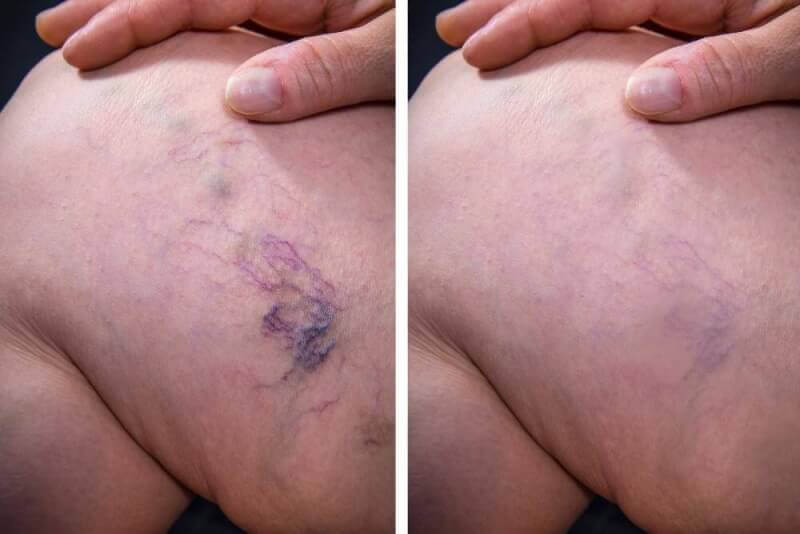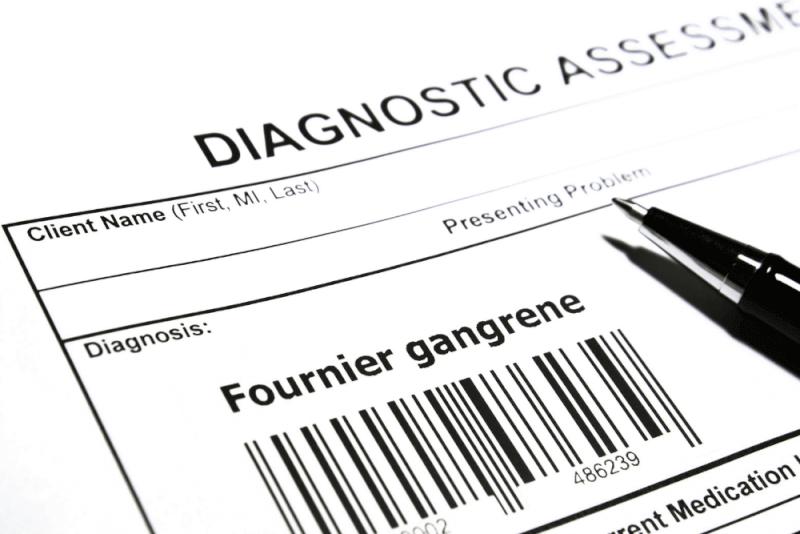30 Second Summary
- Peripheral artery disease is also known as peripheral vascular disease.
- Peripheral vascular disease generally occurs due to plaque buildup in the arteries. This process is called atherosclerosis.
- In half of the cases of peripheral artery disease, no symptoms are observed. This condition can continue to develop throughout life, and symptoms begin to appear when the artery is 60% blocked.
- The diagnosis of peripheral artery disease is initially made through a physical examination. Additionally, relevant medical history is collected.
What is Peripheral Vascular Disease?
Peripheral vascular disease is the condition caused by plaque buildup in the arteries of the legs. The leg arteries are responsible for carrying oxygen-rich blood and nutrients from the heart to the arms and legs. Peripheral artery disease is also known as peripheral vascular disease.
Arteries, which are hollow tubes, have a smooth lining that prevents blood clotting and supports constant blood flow. In peripheral artery disease, plaque made up of fat, cholesterol, and other substances accumulates on the inner surface of the artery walls. This causes the arteries to gradually narrow.
Most plaque deposits are hard on the outside and soft on the inside. The hard surface can crack or tear. This causes platelets, a blood clotting factor, to accumulate in the area, leading to the formation of blood clots around the plaque. This results in further narrowing of the arteries.
When the arteries become narrowed or blocked due to clots and plaque, blood cannot pass through the region to nourish organs and other tissues. This results in tissue death and gangrene in the areas below the blockage. Gangrene most commonly occurs in the toes.
Some individuals with peripheral artery disease may experience rapid deterioration. The location of the plaque and the person's overall health condition play a significant role in this progression.
Causes of Peripheral Vascular Disease
Peripheral vascular disease generally occurs due to plaque buildup in the arteries, a process called atherosclerosis. It reduces blood flow. Atherosclerosis affects all the arteries in the body, and when it occurs in the arteries supplying the limbs, it causes peripheral artery disease.
Some less common causes of this disease include:
- Vascular inflammation
- Injury to the arm or leg
- Changes in muscles or ligaments
- Exposure to radiation
Symptoms of Peripheral Artery Disease
Half of the people with peripheral artery disease do not experience any symptoms. This condition can continue to develop throughout life, and symptoms begin to appear when the artery is 60% blocked. The symptoms of peripheral artery disease may include:
- Burning and pain in the feet and toes, especially when lying flat
- One foot feeling colder than the other
- Redness or color changes in the skin
- More frequent skin and soft tissue infections
- Non-healing foot ulcers
- Numbness and weakness in the legs
- Absence of pulses in the legs or feet
- Severe cramps in the hips, thighs, or calf muscles after walking or climbing stairs
- Slow-growing toenails
- Pain and cramps in the arms after activities that involve using the arms, such as writing or knitting
- Erectile dysfunction
- Hair loss or slower hair growth in the legs
- Increased pain leading to disrupted sleep in the case of worsening condition
- Pain relieved by hanging the feet down or walking
Diagnosis Criteria for Peripheral Vascular Disease
The diagnosis of peripheral artery disease is primarily made through a physical examination. Additionally, relevant medical history is gathered. In peripheral artery disease, the pulse in the affected area may be weak or absent. Tests that may be used to confirm the diagnosis include:
Blood Tests
These tests are used to check for conditions related to peripheral artery disease, such as diabetes, high cholesterol, and triglycerides.
Ankle-Brachial Index (ABI)
This is the most commonly used test for diagnosing peripheral artery disease. The blood pressure in the ankle is compared with the blood pressure in the arm. A treadmill test may be required. Blood pressure may be measured before and after exercise to check the condition of the arteries.
Leg or Foot Ultrasound
This is used to understand how blood moves through blood vessels. Typically, Doppler ultrasound is used for this test.
Angiography
Various imaging techniques are used to detect blockages in the arteries. A contrast material is injected before imaging to help get a clearer view of the vessels.
Treatment Options for Peripheral Vascular Disease
The goals of treating peripheral vascular disease include:
- Managing symptoms such as leg pain
- Improving artery health to reduce the risk of heart attack and stroke
Treatment for peripheral vascular disease often involves lifestyle changes, and in some cases, medications.
Lifestyle changes, especially in the early stages, can help improve symptoms. These changes include quitting smoking and engaging in planned exercise.
Medications
If the disease causes symptoms, various medications may be prescribed, including:
- Statins are commonly prescribed to lower bad cholesterol and reduce plaque buildup in the arteries. They also help reduce the risk of heart attack and stroke.
- Antihypertensive medications may be prescribed to control blood pressure, which helps prevent artery hardening.
- Medications to control blood sugar may be prescribed for patients with diabetes.
- Anticoagulants can help improve blood flow to the limbs.
- Cilostazol helps thin the blood and dilate blood vessels, thereby increasing blood flow to the legs and alleviating leg pain.
Surgery for Peripheral Vascular Disease
If the disease causes limping, surgical treatment options should be considered.
Surgical Methods for Peripheral Vascular Disease
Surgical treatment options for peripheral vascular disease include:
Angioplasty and Stent Placement
This procedure is used to open a blocked artery. A catheter is inserted into the blocked artery, and a small balloon is inflated to open the artery. A stent is placed in the artery to keep it open.
Bypass Surgery
In this surgery, a healthy blood vessel from another part of the body or a synthetic graft is used to create an alternative route around the blocked artery, allowing blood to flow to the legs.
Thrombolytic Therapy
In the case of a blood clot blocking an artery, a clot-dissolving medication is directly injected into the affected area.
Benefits of Surgery for Peripheral Vascular Disease
Surgical intervention can quickly open the blood vessel, allowing blood to flow to the legs, minimizing tissue loss, and resolving symptoms caused by the disease.
Complications of Peripheral Vascular Disease Surgery
Potential complications after surgery include:
- Swelling, bleeding, and pain at the catheter insertion site
- Chest pain
- Shortness of breath
- Fever
- Chills
- Dizziness
- Numbness in the legs
- Abdominal pain
- Opening of the incision site
Recovery Process for Peripheral Vascular Disease
The recovery process after surgery for peripheral vascular disease depends on the procedure:
- Patients may need to stay in the hospital for 1-2 nights, depending on the procedure.
- Recovery from atherectomy typically takes a few days.
- Recovery from angioplasty is completed within a week.
- Recovery from bypass surgery takes 6-8 weeks.
What Should Individuals with Peripheral Vascular Disease Pay Attention To?
Many individuals with peripheral vascular disease can manage symptoms by making lifestyle changes. These changes include:
- Quitting tobacco products
- Adopting a fiber-rich diet
- Following a low-cholesterol, low-fat, and low-sodium diet
- Exercising regularly
- Managing health issues such as high blood pressure, diabetes, and high cholesterol
- Reducing stress
- Taking good care of feet and skin to reduce the risk of infection
Risks of Peripheral Vascular Disease
Complications of peripheral vascular disease include:
- Critical limb ischemia leading to tissue death due to injury or infection. Symptoms include open, non-healing wounds on the limbs, often requiring amputation.
- Plaque buildup in the arteries can also affect blood vessels in the heart and brain, leading to stroke and heart attack.
- Pain caused by peripheral vascular disease may limit mobility.
- Severe pain in the affected area
Who is at Risk for Peripheral Vascular Disease?
Factors that increase the risk of peripheral vascular disease include:
- Smoking
- Having diabetes
- Family history of peripheral artery disease, stroke, or heart disease
- High blood pressure
- High cholesterol
- High levels of homocysteine, an amino acid that increases the risk of coronary artery disease
- Being over the age of 65
- Obesity
- Having a blood clotting disorder
- Having kidney disease







